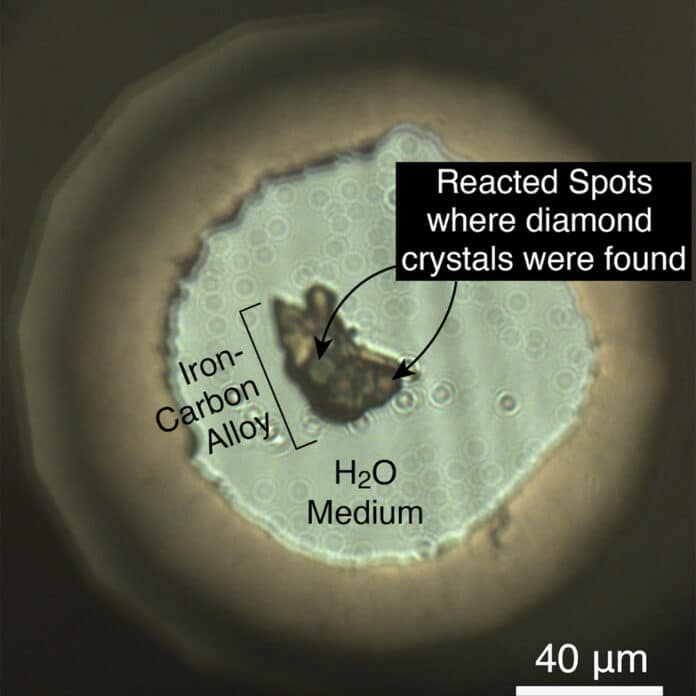The Carbon and water cycles in the Earth’s interior are linked to key planetary processes, such as mantle melting, degassing, chemical differentiation, and advection. However, the role of water in the carbon exchange between the cover and core is not well known.
At the Advanced Photon Source at Argonne National Laboratory, Byeongkwan Ko, a recent Ph.D. graduate from Arizona State University, and his team have been conducting experiments where they compressed water and iron-carbon alloy to the pressure and Temperature anticipated for the Earth’s core-mantle boundary, melting the iron-carbon alloy.
Scientists found that water and metal react and make iron oxides and hydroxides, just like rusting on Earth’s surface. They also found that for the conditions of the core-mantle boundary, unlike rusting on Earth’s surface, Carbon comes out of the liquid iron metal alloy and forms a diamond.
Since Carbon is an element that loves iron, it is anticipated that the core will contain a substantial amount of Carbon while the mantle is thought to have relatively low Carbon. According to scientists, the mantle actually includes much more Carbon than was previously thought.
Dan Shim, a professor at ASU’s School of Earth and Space Exploration and a co-author on the paper, said, “Temperature at the boundary between the silicate mantle and the metallic core at 3,000 km depth reaches to (about 7,000 degrees Fahrenheit), which is sufficiently high for most minerals to lose H2O captured in their atomic-scale structures. The Temperature is high enough that some minerals should melt at such conditions.”
Shim said, “At the pressures expected for the Earth’s core-mantle boundary, hydrogen alloying with iron metal liquid appears to reduce the solubility of other light elements in the core. Therefore, the solubility of Carbon, which likely exists in the Earth’s core, decreases locally where hydrogen enters into the core from the mantle (through dehydration).”
“The stable form of Carbon at the pressure-temperature conditions of the Earth’s core-mantle boundary is diamond. So the Carbon escaping from the liquid outer core would become diamond when it enters the mantle.”
Ko said, “Carbon is essential for life and plays an important role in many geological processes. The discovery of a carbon transfer mechanism from the core to the mantle will shed light on understanding the carbon cycle in the Earth’s deep interior. This is even more exciting given that the diamond formation at the core-mantle boundary might have been going on for billions of years since the initiation of subduction on the planet.”
“This new study shows that carbon leaking from the core into the mantle by this diamond formation process may supply enough carbon to explain the elevated carbon amounts in the mantle.”
Scientists also predicted that diamond-rich structures could exist at the core-mantle boundary and that seismic studies might detect the structures because seismic waves should travel unusually fast for the structures.
Shim said, “The reason seismic waves should propagate exceptionally fast through diamond-rich structures at the core-mantle boundary is because diamond is extremely incompressible and less dense than other materials at the core-mantle boundary.”
Journal Reference:
- Byeongkwan Ko, Stella Chariton, et al. Water-Induced Diamond Formation at Earth’s Core-Mantle Boundary. Geophysical Research Letters. DOI: 10.1029/2022GL098271
